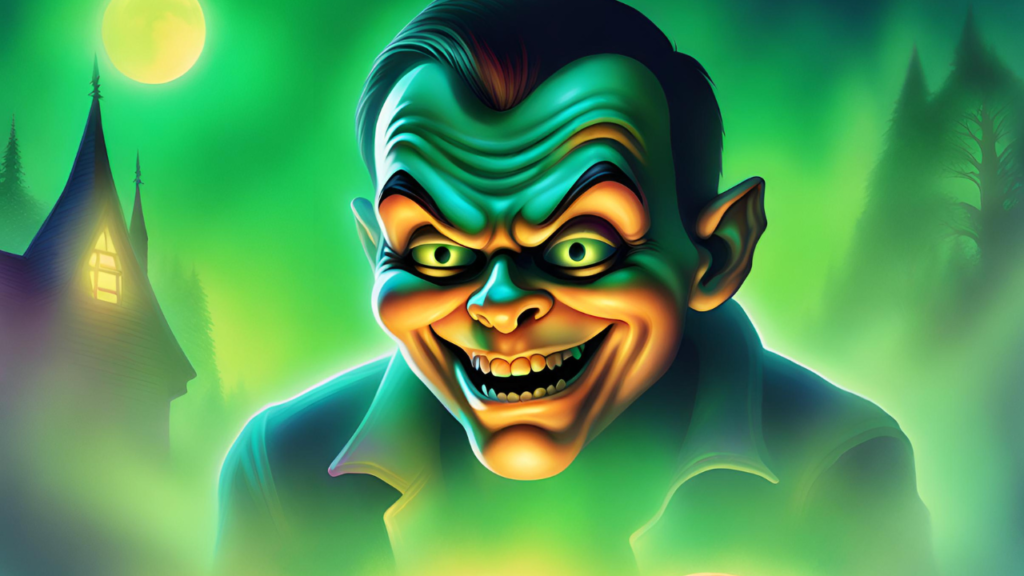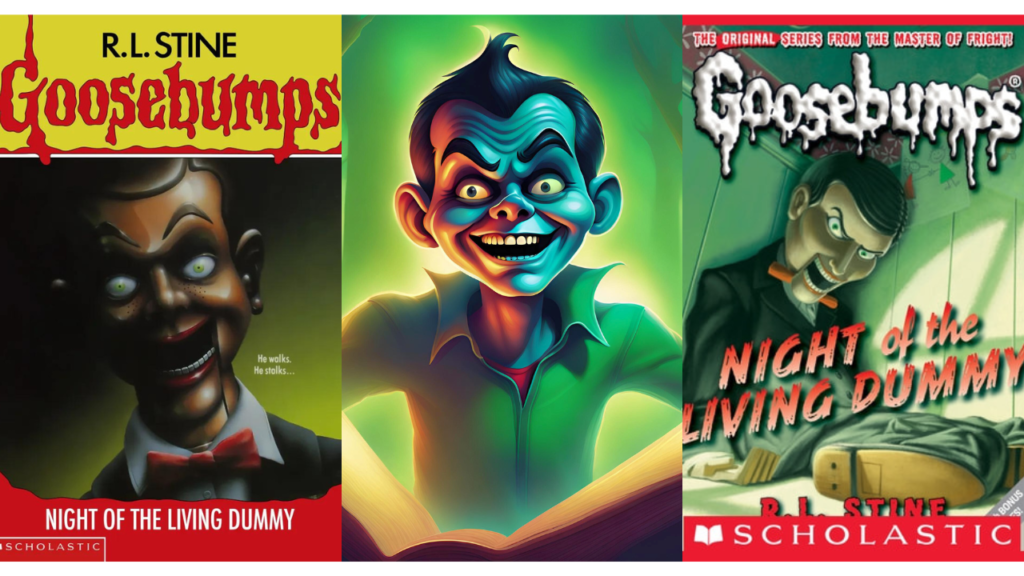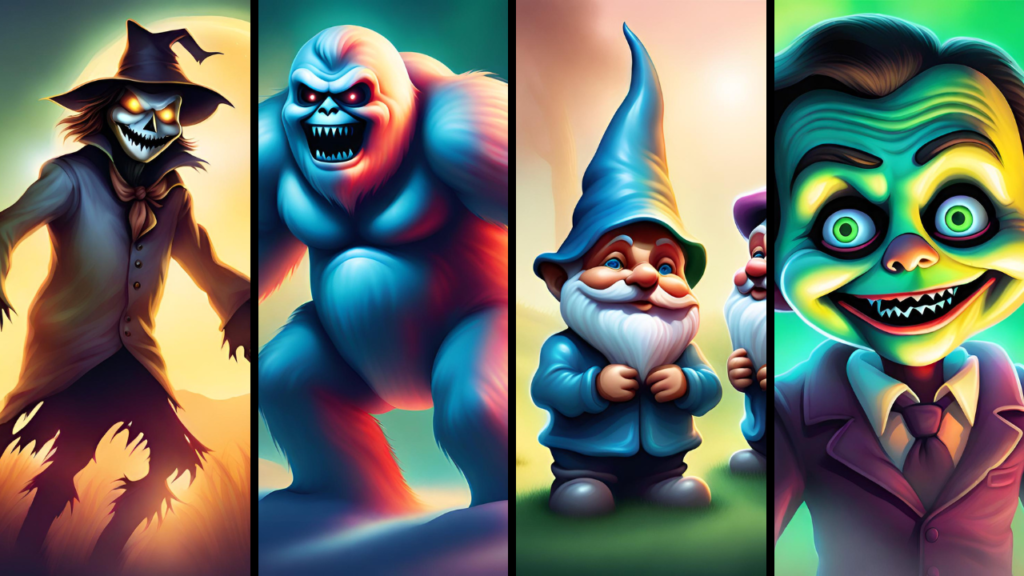Nostalgia Trip: Revisiting Childhood Frights with Goosebumps
For many of us who grew up in the 90s, the name R.L. Stine evokes a whirlwind of thrills and chills. His iconic ‘Goosebumps‘ series, with its neon covers and monstrous creations, was a staple of childhood – a gateway into the delightfully spooky world of horror fiction designed for young readers. Now, as adults, it’s time to revisit those childhood terrors and see if they still hold the same power.
| Key Takeaways | Summary |
|---|---|
| Nostalgic Allure | Goosebumps, with its relatable protagonists and gradual buildup of tension, offered a thrilling yet controlled experience of fear that resonated deeply with readers, making it a cherished part of many childhoods. |
| Legacy of Introduction | R.L. Stine’s series served as an entry point into the world of horror for many young readers, sparking an enduring love for the genre and potentially laying the groundwork for a lifelong appreciation of literature. |
| Empowering Fear | Through its playful yet manageable scares, Goosebumps instilled a sense of bravery and empowerment in its readers, demonstrating that confronting fears, whether in books or in real life, could lead to feelings of strength and resilience. |
| Community and Cultural Impact | The widespread popularity of Goosebumps fostered a sense of community among its readers, who eagerly shared their favorite titles and eagerly anticipated new releases, creating a shared cultural experience that remains nostalgic for many adults today. |
| Nostalgic Revisitation | Revisiting Goosebumps as adults not only evokes cherished memories but also offers a fresh perspective on the series, allowing for an appreciation of its craftsmanship, its ability to confront childhood fears, and its role as a source of comforting escapism in a complex world. |
The Allure of Goosebumps
Goosebumps excelled at featuring kids just like its readers. They weren’t superheroes or extraordinary geniuses; they were average kids dealing with typical kid problems like bullies, moving to a new town, or sibling rivalry. This made the extraordinary events they encountered seem even more shocking and frightening because it felt like they could happen to anyone.
R.L. Stine was a master at slowly building tension. He’d drop hints of strange occurrences early on, subtly raising the reader’s anxiety. Each chapter added layers to the mystery, with unexpected twists and turns that kept you frantically turning the pages.
While Goosebumps delivered genuine thrills and chills, there was something reassuring about the controlled nature of the fear. Readers knew they were in for a spooky story, and that feeling of being slightly scared on purpose was exhilarating—the literary equivalent of a kid-friendly haunted house.
Goosebumps offered an escape from the mundane realities of childhood. School troubles, homework, and choresfaded away as the reader became entangled in battles with living dummies, haunted masks, and hungry blob monsters.
Stine’s famous twist endings were a defining characteristic of the series. These unexpected turns of events added an extra layer of surprise and shock. Sometimes they were darkly humorous, other times genuinely unsettling. They cemented Goosebumps’ reputation for providing a delightfully unpredictable reading experience that lingered in the mind long after the book was finished.

Crafting Tension
R.L. Stine’s Goosebumps series became a phenomenon due to his skillful creation of tension and unforgettable scares. He used a variety of techniques to keep readers on edge. For example, in “Night of the Living Dummy”, the introduction of Slappy, a sinister ventriloquist’s dummy, creates an immediate sense of unease. Stine slowly builds tension as Slappy seems to whisper threatening phrases and move on his own.
This blend of the seemingly ordinary (a doll) with the supernatural makes for a chilling effect. Similarly, in “The Haunted Mask”, Carly Beth’s transformation from a shy girl into a cruel monster once she puts on the mask is terrifying because it plays into the fear of losing control. The gradual personality shifts and the mask’s refusal to come off create a feeling of helplessness. These are just a few examples of how Stine masterfully built suspense and crafted scares that stick with readers long after they finish a Goosebumps book.
The Goosebumps Legacy
For many kids, Goosebumps was their first foray into the world of horror. In a safe and age-appropriate way, Stine introduced young readers to classic horror tropes like monsters, ghosts, and supernatural occurrences. This sparked a curiosity and love of the genre that likely stayed with them, eventually leading some to explore darker and more complex horror fiction as they grew older.
Goosebumps books were page-turners. Their snappy plots, easy-to-follow language, and thrilling cliffhangers made them enticing even for reluctant readers. For many kids, these books might have ignited a lifelong love of reading, showing them that books could be sources of fun and excitement.
Goosebumps demonstrated that fear didn’t have to be truly terrifying. There was a level of playfulness and absurdity in the scares that made them enjoyable. Stine showed kids that overcoming in-book fears could make them feel brave and empowered, a concept potentially transferable to real-life anxieties.
During its peak, everyone seemed to be reading Goosebumps. It was more than a book series; it became a cultural touchstone. Sharing favorite titles, debating the scariest monsters, and excitedly awaiting the newest release created a special sense of community among kids of the era.
For adults raised on Goosebumps, the series holds powerful nostalgia. Revisiting the books evokes feelings of childhood, simpler times, and the first thrill of getting spooked. This enduring nostalgia further cements Goosebumps’ place within popular culture.

How Tv Changed Everything
Goosebumps introduced many children to the thrills and chills of horror in a safe, age-appropriate way. Its combination of scares, humor, and often-surprising twists demystified the genre, making it approachable and fun. This often lead them to explore more complex and mature horror literature as they got older.
Before Goosebumps, children’s horror was often seen as tame or overly educational. Stine injected a new energy into the genre, embracing suspense, darker themes, and cliffhanger endings. This paved the way for a wave of exciting and often boundary-pushing children’s horror authors and series that followed.
The popularity of the Goosebumps TV series and the more recent movies brought Stine’s stories to an even wider audience. These adaptations introduced new generations to the world of Goosebumps, often prompting them to seek out the original books. Its success demonstrated the enduring appeal of horror for young audiences.
Overall, Goosebumps played a crucial role in fostering a love of reading by making the experience exciting and accessible. Its legacy is seen in the continued popularity of children’s horror and the willingness of publishers and creators to explore darker and more thrilling themes for young audiences.
Reliving the Terror: Does it Hold Up?
The biggest draw when revisiting Goosebumps lies in the nostalgia. Even though the scares might be tamer now, the simple act of cracking open a well-loved Goosebumps book unlocks a flood of childhood memories—the smell of the paper, the excitement of flipping to a favorite scene, the iconic cover art.
As an adult, you gain a new appreciation for the delightfully ridiculous elements of the Goosebumps universe. The over-the-top monsters (killer ventriloquist dummies? Body-swapping sponges?), the silly plot twists, and sometimes cheesy dialogue become sources of amusement rather than pure fear.
While the monsters may seem less intimidating, you can admire the craftsmanship that still shines through. Stine’s relentless pacing, the way he expertly built tension, and his ability to deliver those unexpected twist endings remain highly effective. It’s a reminder of the timeless power of a well-told story.
Childhood fears were very real. As an adult, revisiting those fears in the safe space of a Goosebumps book allows for a new perspective. You gain an appreciation for the way these stories confronted childhood anxieties and insecurities, even if the threats were wrapped in fantastical creatures.
Just like in childhood, revisiting Goosebumps offers a form of escapism. Adult life can be complex and stressful; there’s a simple pleasure in immersing yourself in this contained world of youthful frights and the eventual triumph of good over evil.

The Power Of Friendship
Many Goosebumps stories highlight the importance of friendship in overcoming challenges. Whether it’s siblings banding together, like in “The Curse of the Mummy’s Tomb”, or friends uniting against a supernatural threat, the books emphasize the power of loyalty and support.
Family dynamics, both positive and negative, feature prominently. Stories like “Say Cheese and Die!” explore the tensions of sibling rivalry, while others show the value of parental guidance in facing the unknown. Goosebumps reminds us of the complex but essential role of family in our lives.
The protagonists in Goosebumps are often ordinary kids thrust into extraordinary situations. Their journeys frequently involve facing fears, confronting bullies, or outsmarting supernatural forces. This speaks to the timeless theme of resilience; even when the odds are stacked against them, finding the courage to keep going.
The line between reality and imagination often blurs in Goosebumps. This reflects the way childhood fears and anxieties can feel very real. At the same time, the books often show imagination as a tool for problem-solving and self-empowerment.
Revisiting Goosebumps as an adult offers a new perspective. While the scares might be less potent, the underlying themes of friendship, family, facing our fears, and the power of imagination remain deeply resonant for readers of all ages.
The Perfect Dose of Childhood Nostalgia
Goosebumps doesn’t just trigger memories; it evokes a whole sensory experience. The distinctive smell of old paperbacks, the feel of the slightly rough cover material, the sound of turning pages – these small details transport you back in time more effectively than just the content of the story itself.
Remembering how you consumed Goosebumps is just as nostalgic. Perhaps you traded books with friends, excitedly discussing the latest twists. Maybe you had a flashlight under the covers reading late into the night, or snuck Goosebumps into class to read secretly. Re-enacting any of these childhood rituals further amplifies the nostalgic experience.
Because Goosebumps was so pervasive, re-reading them reconnects you with a whole generation who experienced the same thing. Sharing memories of favorite books or scariest moments with friends heightens the sense of nostalgia and reminds you of a strong cultural touchstone.
Childhood fears are often based on wild imaginings and a world not fully understood. Goosebumps recaptures that mindset—there’s something sweetly nostalgic in revisiting that innocent kind of fear, in remembering a time when battles with monsters felt all-important.
In a world that often feels overwhelming and chaotic, there’s comfort in revisiting a simpler and more manageable version of scary. Goosebumps allows for a playful re-engagement with a time when your fears had a defined boundary and happy endings were guaranteed.

Summary
| FAQ: Childhood Frights In Goosebumps | Frequently Asked Questions |
|---|---|
| Q1: What is Goosebumps? | A1: Goosebumps is a popular series of children’s horror books written by R.L. Stine. It features standalone stories, each with its own cast of characters and spooky plotlines. |
| Q2: How do Goosebumps books evoke childhood frights? | A2: Goosebumps books are expertly crafted to tap into common childhood fears such as monsters, ghosts, and the unknown. The stories often feature relatable protagonists facing eerie situations that escalate tension gradually, creating a thrilling yet manageable experience of fear for young readers. |
| Q3: Are Goosebumps books appropriate for children? | A3: While Goosebumps books are designed to be spooky and may contain themes of horror, they are generally considered suitable for children aged 8 and up. However, individual sensitivity to scary content varies, so parents may want to preview books or discuss them with their children to ensure they are comfortable with the material. |
| Q4: How do Goosebumps books empower young readers? | A4: Despite their frightful elements, Goosebumps books often feature protagonists who confront their fears and overcome challenges, instilling a sense of bravery and empowerment in young readers. This can be a valuable lesson in resilience and facing one’s fears. |
| Q5: Can revisiting Goosebumps as an adult still evoke childhood frights? | A5: Yes, many adults find that revisiting Goosebumps books can stir up nostalgic feelings of childhood frights. While the scares may not be as intense as they were in childhood, the stories often hold up well and can still provide an entertaining and spooky experience for adult readers. |
| Q6: What is the legacy of Goosebumps in children’s literature? | A6: Goosebumps has had a significant impact on children’s literature, introducing many young readers to the horror genre and fostering a love of reading. Its enduring popularity has led to numerous spin-offs, adaptations, and a lasting cultural influence. |


[…] R.L. Stine’s Goosebumps series achieved iconic status in the 1990s, its thrilling blend of horror, humor, and just a touch of the bizarre perfectly capturing the imagination of young readers. The books, and the popular television series based on them, cemented a legacy that continues today. But the world of Goosebumps wasn’t limited to those original stories! Several successful spin-offs expanded the chillingly delightful world Stine created. […]
[…] in Stine’s work are brief and purposeful. Rarely will you see extended passages about weather or a character’s inner […]